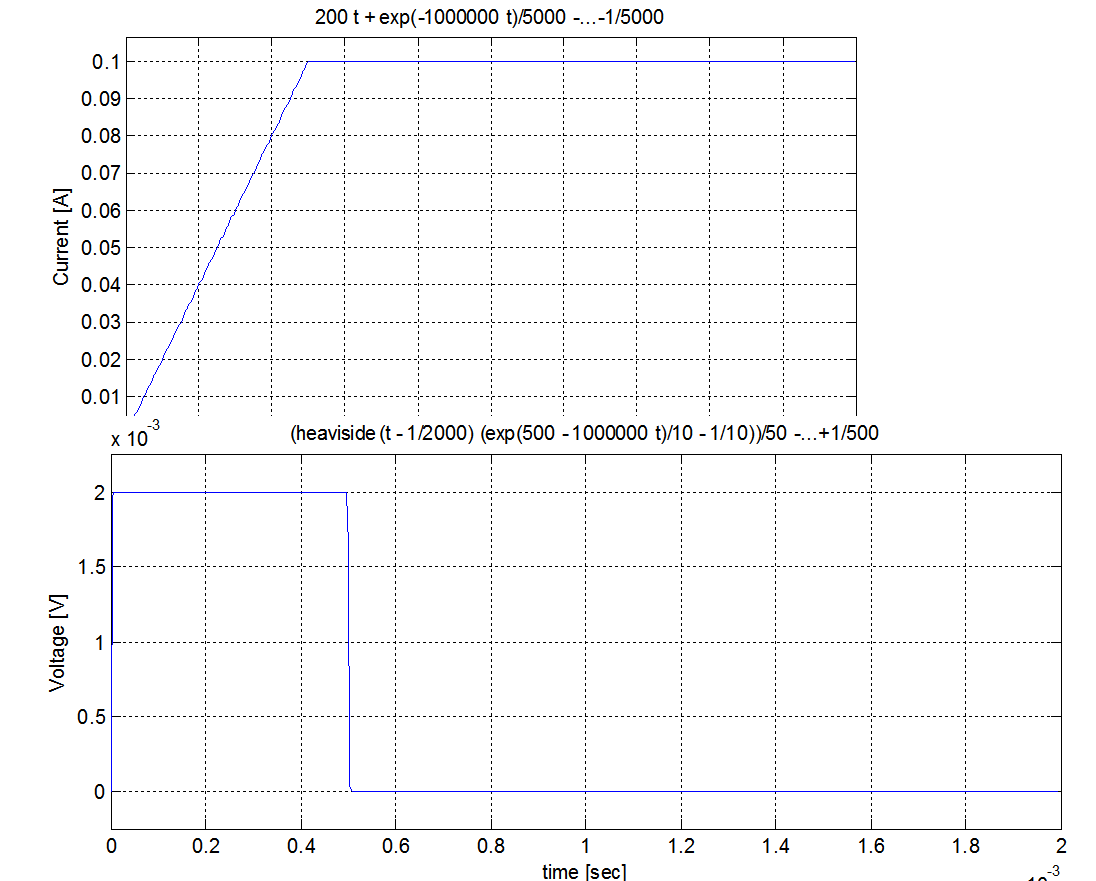Below is an RL circuit and transient response plots of the inductor voltage V(vl) and current I(L1). V1 = V(n001) is the voltage applied to the circuit at time 0.1sec. (I set all series and parallel resistances and capacitors of source and inductor to zero for simulating a pure RL circuit)
What is happening above is that, the moment the switch is ON the inductor immediately opposes the current change and inductor voltage at that moment jumps to the voltage of V1. And current starts from zero so at t=0.1 I = V1 - VL = 0. These can be seen in the above plots.
But now when I change the values of the inductor and the resistor as in the circuit below things do not follow the same logic:
As you see the inductor current again starts from zero at time t=0.1sec; which means the inductor voltage should again be equal to the source voltage V1 at time t=0.1sec. But the inductor voltage is VL 200mV in the above plot which confused me.
When I reduced the rise time of the rising edge of the switch the VL became equal to V1 again which is 1V. I think texts consider duration of the switching action is in infinitesimal amount of time.
Does the transient theory considers rising edges almost 0 seconds? And what is the relation between the rising edge of the switching and the initial inductor voltage here?
In other words how can the rising edge effect on the inductor voltage can be explained or formulated here?
EDIT:
Solving this with Laplace and plotting in MATLAB gave the same results.
Here is what I did in MATLAB:
(Got help from the math guys here for V(s))
clear all;
clc;
syms s t
R=10;%resistance
L=10*10^-6;%inductance
a=1;%final voltage 1V
t1=0.0005;%rising time for the switch
m=1/t1;%slope of the rising edge
V = (-m*t1*exp(-s.*t1))./s + m*(1-exp(-s.*t1))./s.^2 + a*exp(-s.*t1)./s;%V(s) switch voltage
I = V./(R+s.*L);%current in s domain
VL=V-I.*R;
y= ilaplace(VL,t);%inverse Laplace
ezplot(y,[0,0.0004])
ylabel('Voltage [V]')
xlabel('time [sec]')
grid on;
Both in LTspice and MATLAB I set the rising time as 0.0005 sec.
Here are the plots from both LTspice and then MATLAB:
It seems like results agree. So it seems LTspice does not calculate anything wrong here. Its just if the rising edge is slow thats what expected.
Do you agree?





